(First upload on September 16 2009. Last on September 21 2018) [ 日本語 | English ]
Mount Usu / Sarobetsu post-mined peatland
From left: Crater basin in 1986 and 2006. Cottongrass / Daylily
HOME > Plant list (植物リスト) > Asteraceae (キク科) > Cacalia hastata
C. hastata L.ssp. orientalis Kitam.Yobusumasou (ヨブスマソウ, 夜襖草) Lifeform: deciduous perennial forb, with 1-3 m tall, larger than ssp. farfaraefolia Distribution: East Asia (including northern Japan) Habitat: mesic grassland (Flora on Mount Usu) Leaf: 25-35 cm wide with hair at both sides or one side, usually developing wings at the petioles |
Chromosome number: 2n = 60
var. ramosa (Maxim.) Kitam. (オオバコウモリ), branched Indian plantain
var. alata Kitam. (オクヤマコウモリ) |
|
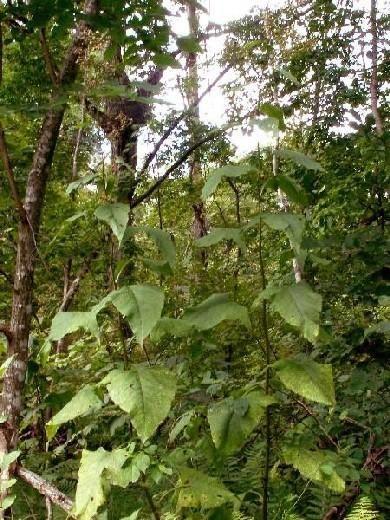 1
1
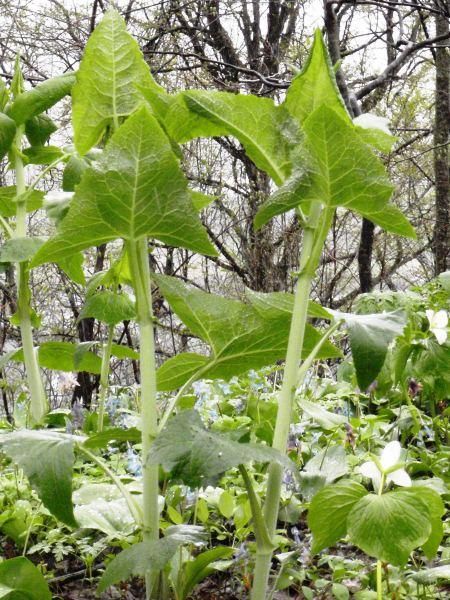 2
2
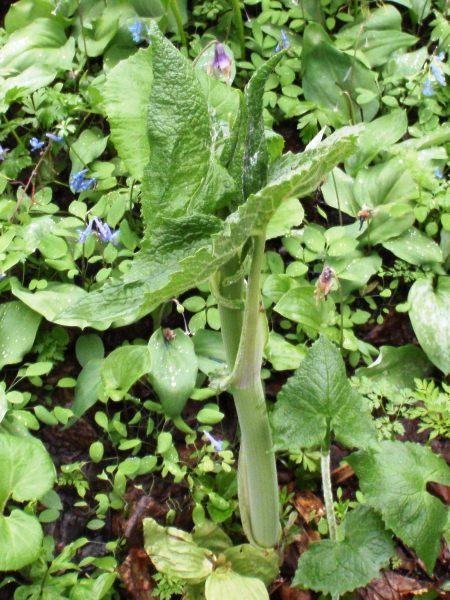 3
3
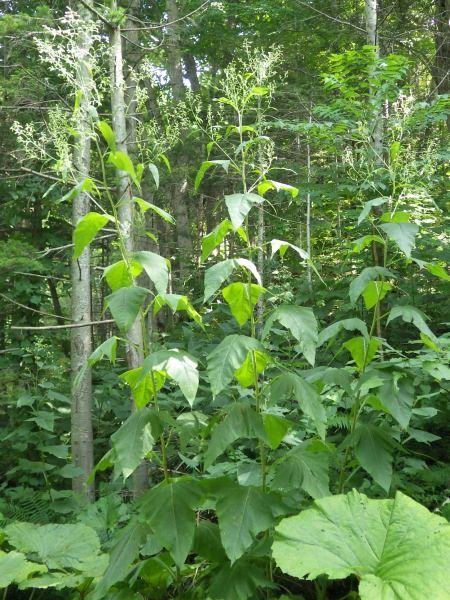 4
4
[1] aboveground shoots near a junglezym in Tomakomai Experimental forest on September 10 2009. [2/3] shoots soon after the emergence at Otokoyama Nature Park, Asahikawa, on May 5 2012. [4] around the entrance of Mount Usu near the Kompira Craters on July 26 2017.
 5
5
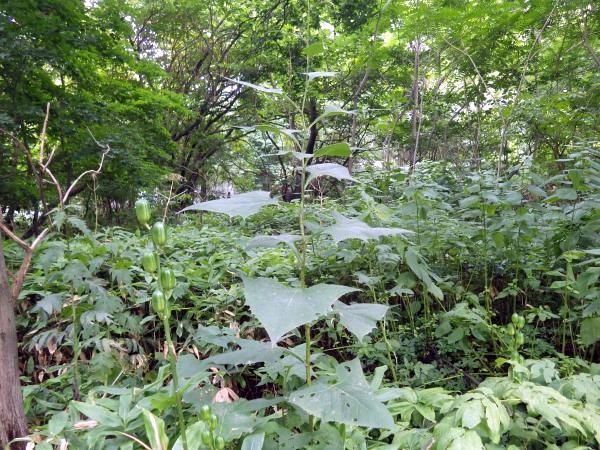 6
6
 7
7
 8
8
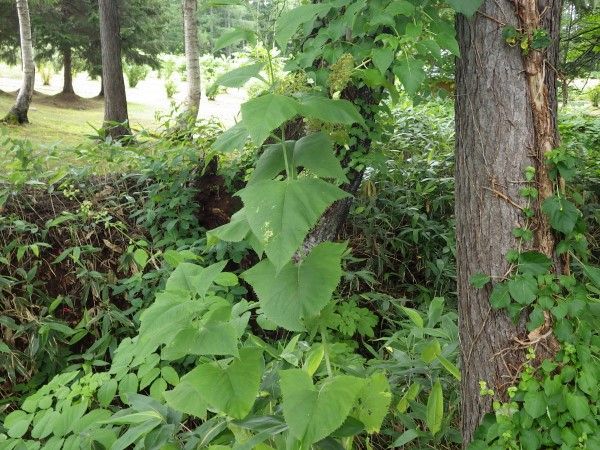 9
9
[5] on a slope of Tomamu skislope, Shimukappu Village, on July 19 2012. [6] in Genshirin (原始林) or Keiteki-no-mori Forest (恵迪の森), HU, on August 20 2015. [7] on the southern foot of Mount Usu on May 2 2016. They are tall ≈ 3 m in height. [8] in Tsukiura Forest Park faced to Toya Lake on September 4 2018. [9] in the Forest of Hokkaido People (道民の森), Tobetsu Town, on July 18 2022. Records: along the Etsumi River in Nakasatunai Village, south-central Hokkaido, on June 25 2025.